Jodie Dalgleish – 26 November, 2010
In 'Kauri' and 'Kauri Trees' Moses' circle also directly references the motif McCahon developed to represent the distinctive circular clumps of foliage that form along vertical Kauri trunks…In his 'French Bay' works Moses has painted luminescent circles that expand like the rings made by drops of water while he references the torch lights that play across the water when night fishing, after McCahon's 'Flounder fishing, night, French Bay'.
Necessary Reflections, the latest series-in-progress from Russell Moses on show at Nadene Milne Gallery in Arrowtown, is noteworthy for the way it casts light on Moses’ practice and allows us to meaningfully reflect on a particular period in the life of Colin McCahon. With his Kauri and French Bay works (all 2010) Moses expands and enriches his oeuvre and creates a lens with which to reconsider McCahon’s Titirangi-placed project.
It is McCahon’s sense of life-in-place that Moses profoundly respects and naturally expresses in his own works painted after visiting the McCahon House and French Bay. Moses’ paintings follow McCahon’s paintings of Kauri and Kauri Trees (1954) through to his most abstracted gouache Kauri of 1957 and his gouache French Bay of 1954 through to his more abstracted painting Flounder fishing, night, French Bay of 1957. Most significantly, Moses honours the sense of life-in-place that John Caselberg described as evident in Kauri Trees and its ability to evoke ‘the minute workings of the life of a plant’. Moses recognises what Peter Simpson similarly describes as the Kauri’s life force and what I would refer to as its mauri - the energy that binds and animates all things in the physical world.
In Necessary Reflections the elongated oval Moses adopts to build his works becomes significant as what Simpson has described as the ‘oval binding line’ that McCahon used not only to collect lively circles, straight lines and curved forms in Kauri Trees, but also the life force of the tree. This line echoes through many of McCahon’s Titirangi paintings and also becomes essential to the form of tree and bay in Kauri Tops (1957) and French Bay (1957) where curve of tree and bay merge. With this form Moses expands the symbols that define his oeuvre while he adds another to reveal the importance of that to them all, especially when encircling his sense of life-in-place, a sense of mauri.
Going further, he introduces the droplet as a painted mark and motif that spreads the life force of tree and water throughout his works. A close view of French Bay/Night Fishing reveals layers of variously-sized droplets that become more sparse and intense in French Bay Blue/Night Fishing. Similarly, a close view of Kauri reveals something like photosynthesis-in-process, thanks to the infusion of a dappled yellow light. Most powerfully, a sense of the internal life-workings of trees and plants is given by Light Garden, where droplets teem with life, morph and grow. And at the painting’s centre is the circle germane to the artist’s oeuvre, the genesis as well as the ultimate form of the artist’s life-giving droplet. The artist has inscribed a luminescent linear circle and makes the paint layers richly intense.
More whimsically, Pohutukawa Tree Tide in presents a circular, fluid, cell-like reflection of Pohutukawa flowers in water - the mirrored surface of the artist’s elongated oval. This makes the flower into water and the water into flower, just as tree and water merge in the painted droplet of Kauri and French Bay paintings. A reminder of the reflective process that produced these works and the importance of seeing oneself as part of a beloved landscape, the viewer becomes part of the work, reflected in its surface. Moses uses a light-making surface, playing on the ‘necessary protection’ McCahon invoked with light falling through a dark and threatened landscape in the early 1970s. This is particularly fitting as Kauri Dieback disease, for which there is no cure or programme of eradication, is spreading rampantly through the Waitakere Ranges.
For Moses the circle has always marked cycles of growth: the rhythm of day and night and the passing of the seasons. Such a sense of natural rhythm is essential to Kauri and Kauri Trees which provide a sense of the movement of light through and within the trees’ canopy and the artist’s own experience of standing and moving among McCahon’s Kauri. In 1957 Caselberg described McCahon’s Titirangi works as suggesting the myriad particularities of the bush and the way it absorbs light and water, glows, sparkles and reflects dancing light back into the sky, and this can be equally applied to the work of Moses.
In Kauri and Kauri Trees his circle directly references the motif McCahon developed to represent the distinctive circular clumps of foliage that occur along vertical Kauri trunks. Painted in translucent paint, these circles float over and through his Kauri works as spheres that reach beyond the painted surface and expand in all directions. In his French Bay works he has painted luminescent circles that expand like the rings made by ever-falling drops of water while he references the torch lights that play across the water when night fishing, after McCahon’s Flounder fishing, night, French Bay.
By night these paintings not only evoke the drama of night fishing, but also the glow of ecclesiastical stained glass windows or the majestic play of phosphorescence in water. Moses brings his circle to life and - even within a single painting that has a particular life by both day and night - he highlights his own as well as McCahon’s interest in the polarities, dynamics and boundless life of nature.
Moses paints his French Bay International Klein Blue, the colour Yves Klein developed to portray the intensity and life of pure ultramarine pigment and his own sense of ‘pure energy’. With it Moses introduces an intense colour to expand the palette of his oeuvre and gestures towards McCahon’s exploration of the blue of sky and sea in French Bay (1956) and his uncharacteristic use of bright colours in his French Bay paintings of 1957. With the diamond shape and vibrancy of these paintings Moses also celebrates McCahon’s diamond-like patches of colour and his related search for ‘some revelation of happiness’ in his grid of diagonals.
Moses’s work has always been about a particular landscape made new, reduced yet intensified in symbol and pattern as well as light and dark. With the ease that comes from having established an artistic vernacular, he revisits and revives McCahon’s beloved landscape. What he offers the viewer, as well as an absent but always-present McCahon, is what McCahon himself searched for throughout his Titirangi years: a way to hold an image of life-in-place together and free the imagination, to let that image expand and take on a life of its own.
Jodie Dalgleish
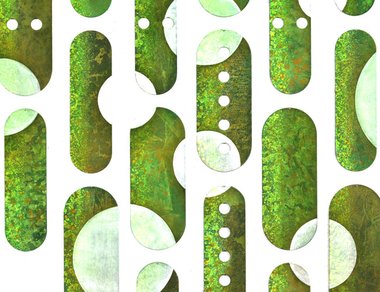
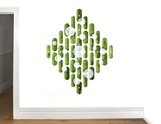





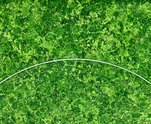
 Two Rooms presents a program of residencies and projects
Two Rooms presents a program of residencies and projects Advertising in this column
Advertising in this column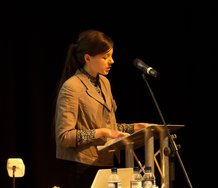
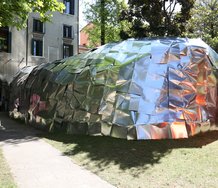
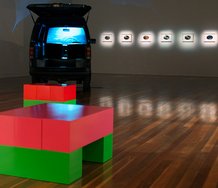
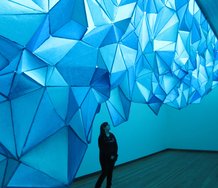
This Discussion has 0 comments.
Comment
Participate
Register to Participate.
Sign in
Sign in to an existing account.